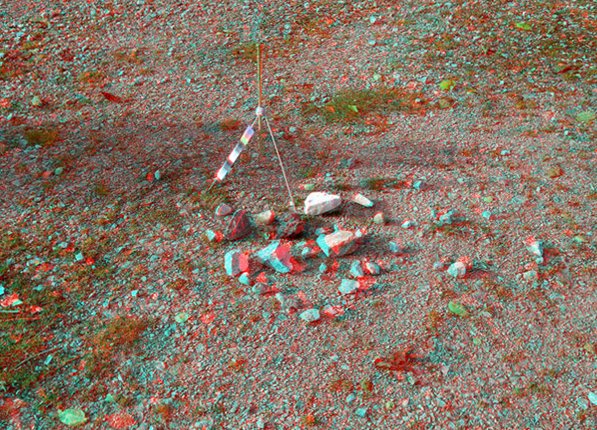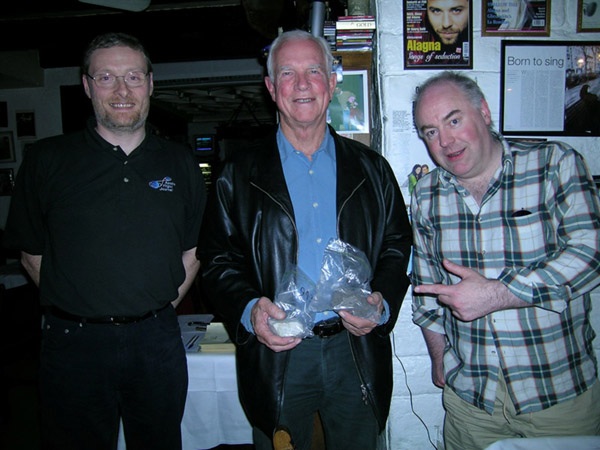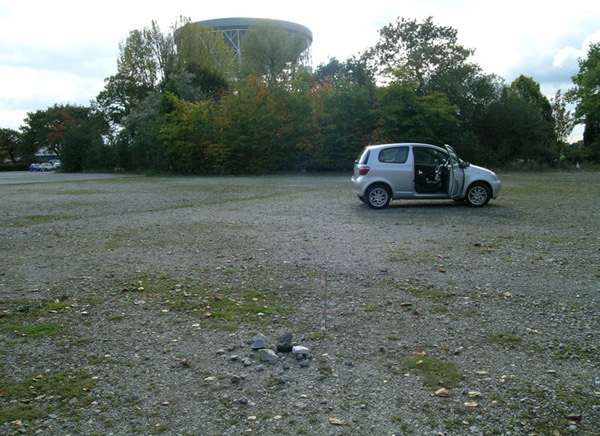
Jodrell Bank Carpark Anaglyph, assembly by Yuri Krasilnikov.
Activities at the London Receiving
Laboratory
As we finished off our meal with Dave
Scott, we announced that we had a surprise for him, presented a set of
printed sampling pictures, which we had stapled together at one corner
so that he could view them in sequence, and then, to his amazement,
gave him the bagged rocks. He promptly extracted our anorthosite, held
it against the candle on the table, and said that he could see the
glint from the twinning of the crystals, thereby confirming it was
anorthosite. To the surprise of the other diners, we then stood, Dave
Scott holding the samples, and
had our picture taken by the proprietor. Much fun was had by all
concerned.
 (l-r) Woods, Scott, and Harland at the
LRL
(l-r) Woods, Scott, and Harland at the
LRL
Note concerning the Scottish Roving
Vehicle (SRV):
The SRV, developed for this mission by
the Toyota Corporation, is specifically designed for mobility across
the non-yielding portions of the terrestrial surface. Trafficability is
aided by the prior preparation of a network of routes covered with a
mixture of bitumen and roadstone (often anorthosite). The exterior of
the SRV is painted with a solar-reflective layer for thermal control
while power comes from the intermittent combustion of hydrocarbon
fuels, extracted from below the planet's surface, with oxygen, as
freely found within the atmosphere.
Provision is made within the vehicle for
control via a standard man-machine interface whereby a wheel allows
steering functions and a series of pedals permit acceleration,
deceleration and for linkage of the engine to the wheels. The narrow
power bandwidth of the engine necessitates multiple gearing selections
during normal operation and a gear change stick is provided for this
purpose.
Development costs for this vehicle are
approximately $250 million. However, anticipated production of multiple
vehicles for widespread distribution over the planet will reduce the
unit cost to accessible levels.
 "Locator" to the SRV, with the Lovell
Telescope in the distance.
"Locator" to the SRV, with the Lovell
Telescope in the distance.
Addendum, 13 August 2009: On the occasion
of his 50th birthday, David Woods proudly displays his new number plate, a gift from Anne and sons Stephen and Kevin. The number plate is on the family's new SRV.
Journal Fun Stuff Page




